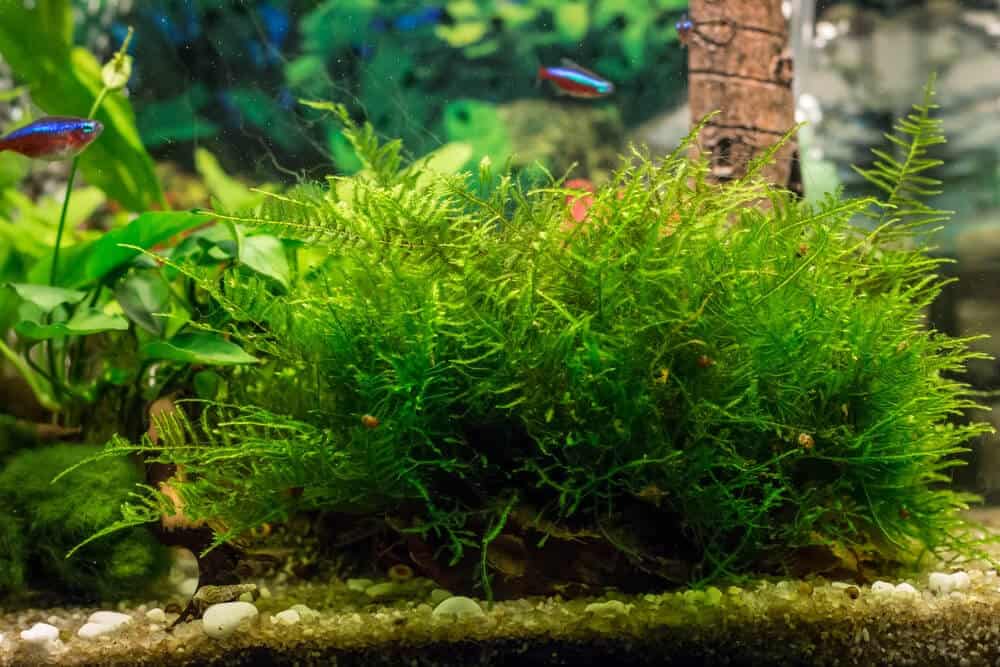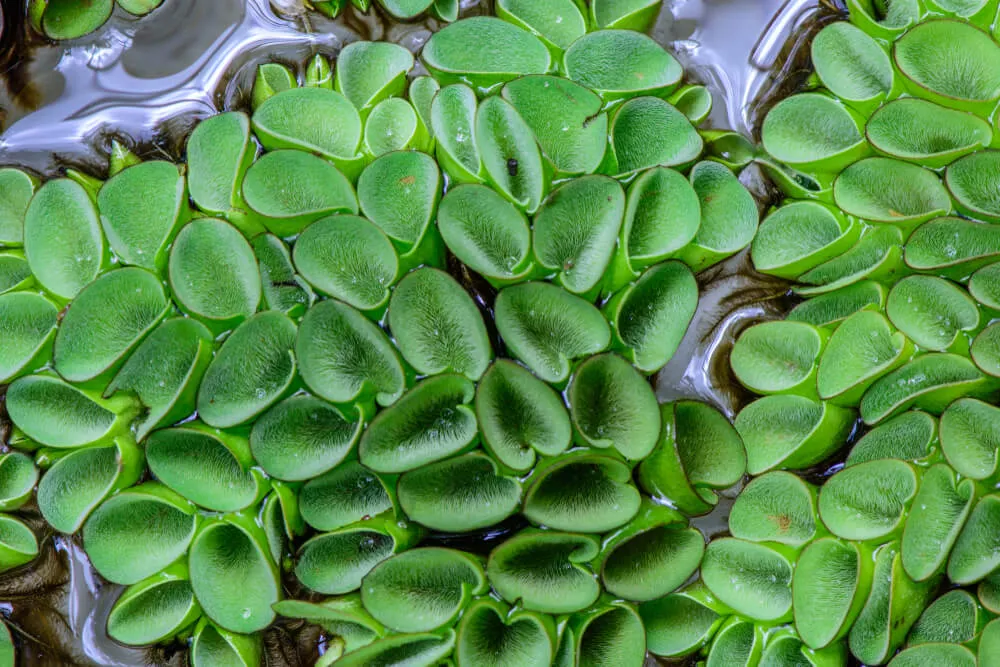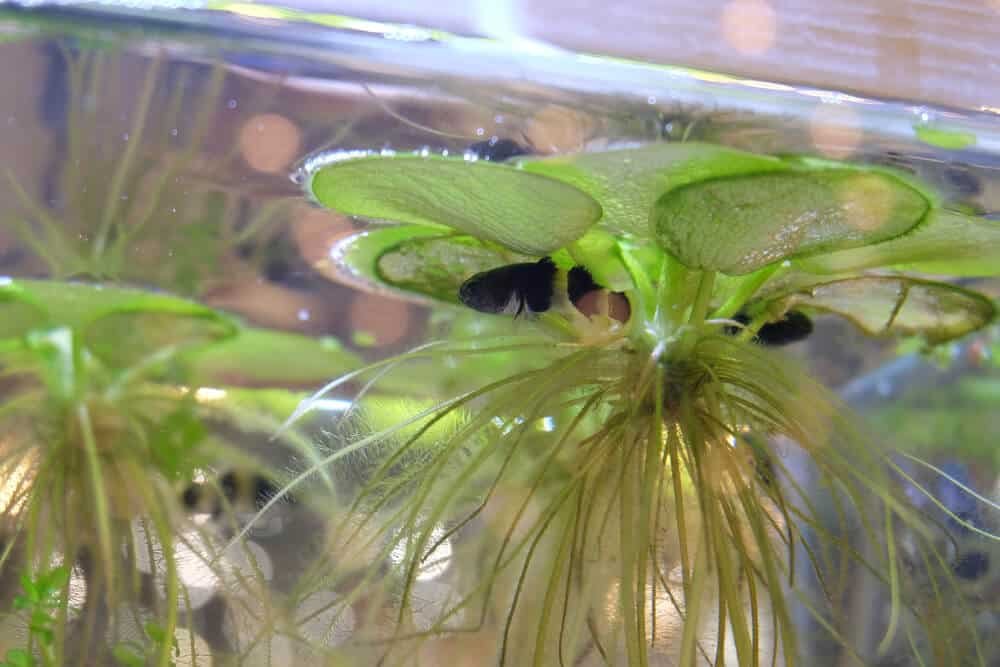Water Lettuce in Aquarium: Care Guide, Growing Tips and Benefits
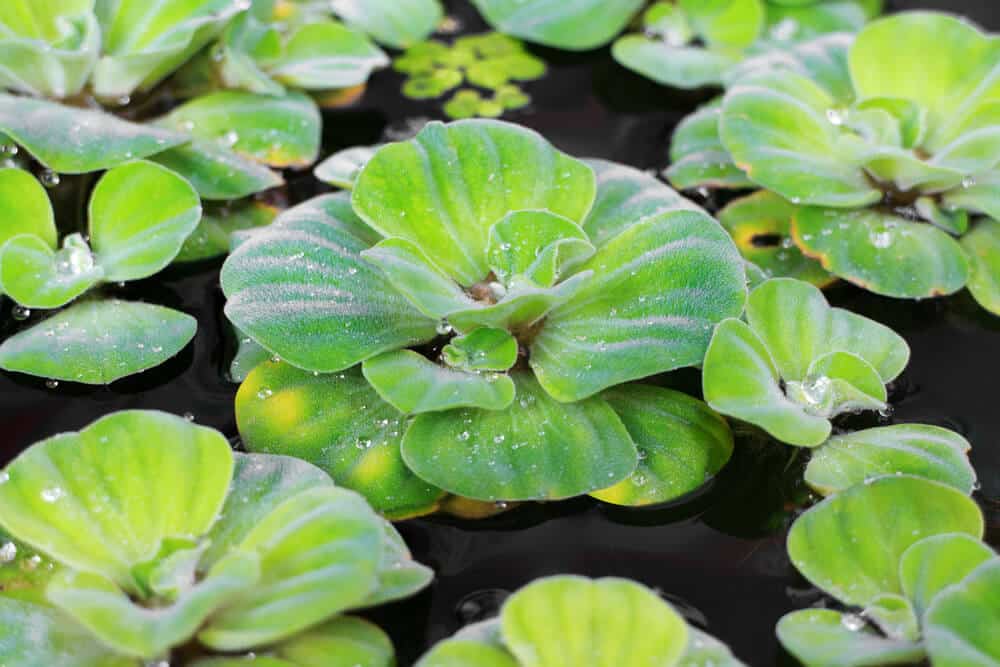
Introduction
Curious about water lettuce in aquarium? If you’ve wanted to add them, but you’re not sure how to, then you’ve come to the right place! Water lettuces are a great addition to any pond or aquarium. They add life and decor to any place they’re in.
Our guide includes everything you need to know about water lettuces and how you can incorporate them into your aquarium. But before we go into that, let’s take a look at what it is and what makes it different from other plants.
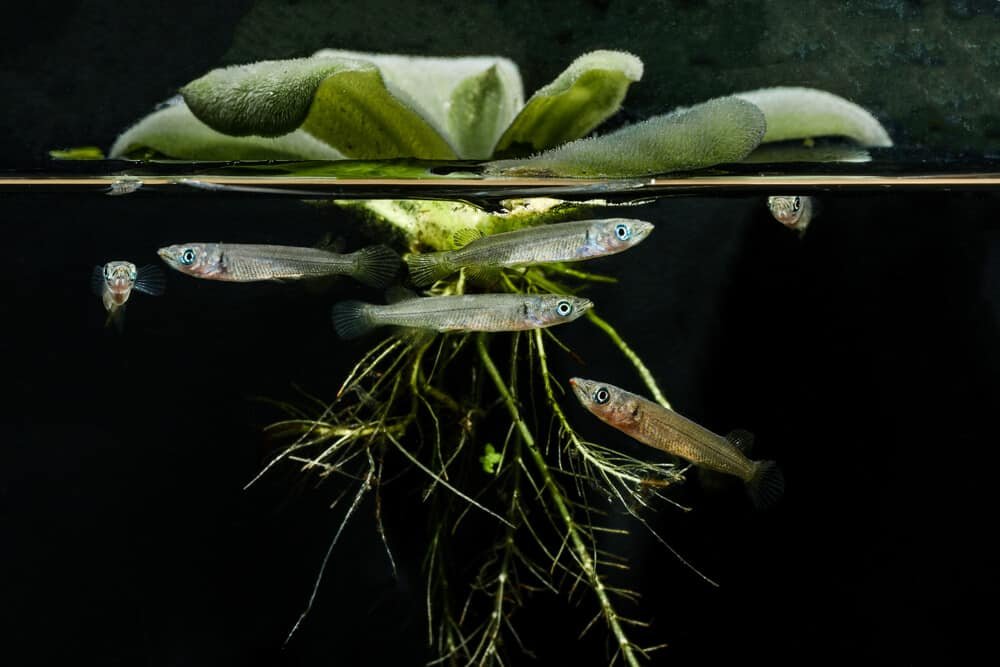
What Is Water Lettuce?
Water lettuce (Pistia stratiotes) is sometimes known as Nile cabbage. It’s even referred to as water cabbage. These plants can grow into an appealing maze of dangling roots with some effort, providing the ideal setting for young and fearful fish.
When grown well, it can have extensive roots and enormous rosettes. That’s why it’s a perfect addition to huge tanks. However, the roots can easily pierce the filter. Therefore it’s best to put it in one of the aquarium’s corners.
Because it gets its nutrition from the water, the plant is frequently left floating in aquariums and ponds. If left unchecked, it can hinder other tank plants from receiving adequate light and nutrition. Water lettuce goes well with a variety of fish and invertebrates like koi fish, cichlids, and snails.
Apart from being robust, the plant grows quickly. That’s why it’s a good choice if you’re just new to making aquariums.
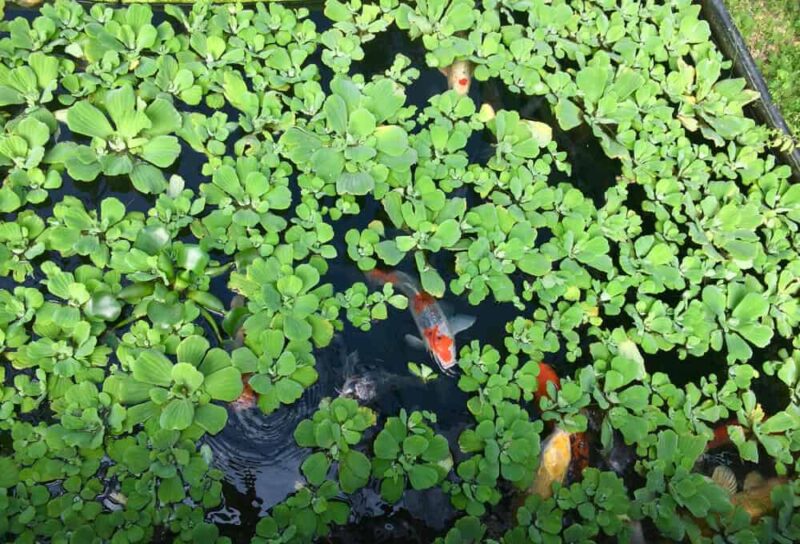
Where Did It Originate?
Water lettuce’s origins are unknown. The first recorded discovery was in Lake Victoria. It can also be found in the Nile River in Africa. It’s found in tropical and subtropical areas all over the world. In the 18th century, the plant was first discovered in the United States.
Water lettuce is popular in the Southeast. However, it is illegal in states such as Mississippi, Florida, and Louisiana. In nitrate-rich streams, particularly those flooded with sewage and fertilizers, it has rapidly become a weed.
Water lettuce grows in the wild in enormous places where its leaves serve as mosquitoes’ breeding sites. It only grows in freshwater.
The Araceae family includes water lettuce. It gets its name from the rosettes that resemble miniature lettuce tops. The plant can form large clusters that are difficult to eradicate.
The water lettuce’s composition boosts stability and allows it to float freely. It has thick yellow-green leaves that form rosettes that hover in the air. Short hairs protrude from the leaves to help the plant retain water and float.
The leaves are connected like ribs to the roots, forming dense mats on top of the water. The leaves of fully grown water lettuce can grow to be 6 inches long. Water lettuce has thin roots that dip in the water to get nourishment.
One of the benefits of this plant is that it does not require dirt or substrate to grow. The roots, which might be white or black, give hiding places for young and timid fish. Wild water lettuce can grow up to 10 inches in diameter, but it will only grow to around 4 inches in the tank.
Its blooms are sometimes buried amid the leaves, and once fertilized, the plant produces spherical berry fertilizer.
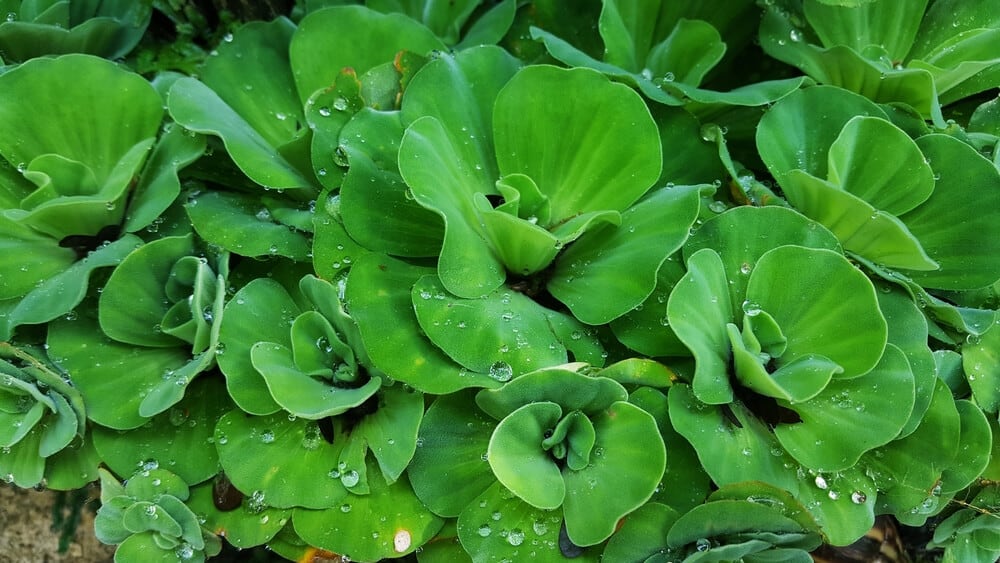
Water Lettuce: What Are They Used For?
Isn’t this an excellent question? There are a few fairly legitimate arguments, considering the never-ending litany of excuses why you shouldn’t try to grow or introduce this plant to your tank.
They aren’t merely uncontrollable plants; on the contrary, many aquarium hobbyists have had success growing and taming this troublesome plant.
They’ve examined their alternatives and chosen to face the challenges that come with being in charge of this primary plant.
The following are some of the applications:
- Decoration
This oddly shaped plant’s attractiveness should never be underestimated. It’s lovely, and it adds a distinctive touch to the aquarium’s surfaces.
- Fish food
As I previously stated, they are becoming past-time snacks for the tank’s herbivores; particularly, have been noted to have a voracious appetite for the plant and to eliminate it when it is still small completely.
- Control algal blooms
Algae is by far the most obnoxious and irritating plant life you can keep in your aquarium. They can be a significant concern if left untreated. Introducing other plants to the tank, such as water lettuce, is one of the most effective ways of stopping them in their tracks.
They have been shown to reduce algal blooms in various aquariums significantly. This may be one of the reasons why, despite the obvious hazards, they are one of the recommended treatments for preventing algae. It can be used to maintain the purity of the water.
Most tank enthusiasts may go unnoticed this minor benefit, but it may be the plant’s most essential and prominent feature. It has the capacity to absorb mercury from water and hence remove it. They can handle a certain quantity of mercury. However, when the portions are too excessive, they are doomed.
1. The water lettuce plant is native to the tropics.
Because the water lettuce was discovered in Africa, it is possible that the plant can only grow and thrive in more moderate climates. The climate of regions near the equator is critical for the water lettuce, as it is for many tropical marine and plant species.
This suggests that this plant can’t flourish in just any climate; it likes warmer, more temperate water, which typically indicates a tropical aquarium. Water lettuce is a tropical plant, which implies it requires a lot of heat and light to thrive.
The water must be around 60 degrees Fahrenheit, and the surface temperature must be between 70 – 80 degrees Fahrenheit at all times.
2. It won’t make it through most winters.
The plant is completely unaffected by the cold. It quickly decays and falls, and keeping it alive over the winter is extremely difficult. Despite the best efforts to maintain it safe and functioning over the chilly colder months, it withers midway through the season.
Moving it to a more moderate or warm area will almost certainly increase its life expectancy, but it is ultimately fruitless. Seldom do they survive it through the winter months.
3. They don’t need soil to grow.
They have delicate roots that spread from the plants and can develop up to an inch or two into the sea as they mature. The water lettuce roots are its primary source of nutrition, and they may live for years without touching soil.
4. Their leaves are distinctive.
The water lettuce leaves are a little different from the rest. It has a one-of-a-kind rosette patterning that is extremely beautiful. The leaves are pale yellow-green and fan-shaped, with ribs connecting them.
Fine hairs coat the leaf surface, which is meant to keep the water and boost the plant’s total stability on any particular water surface. The lettuce leaves are more tightly attached to the plant’s root, finally forming a dense mat over the surface of the water.
The leaves of a fully developed lettuce plant can grow up to 6 inches long, and the plant’s hairs become less thick as you travel closer to the middle.
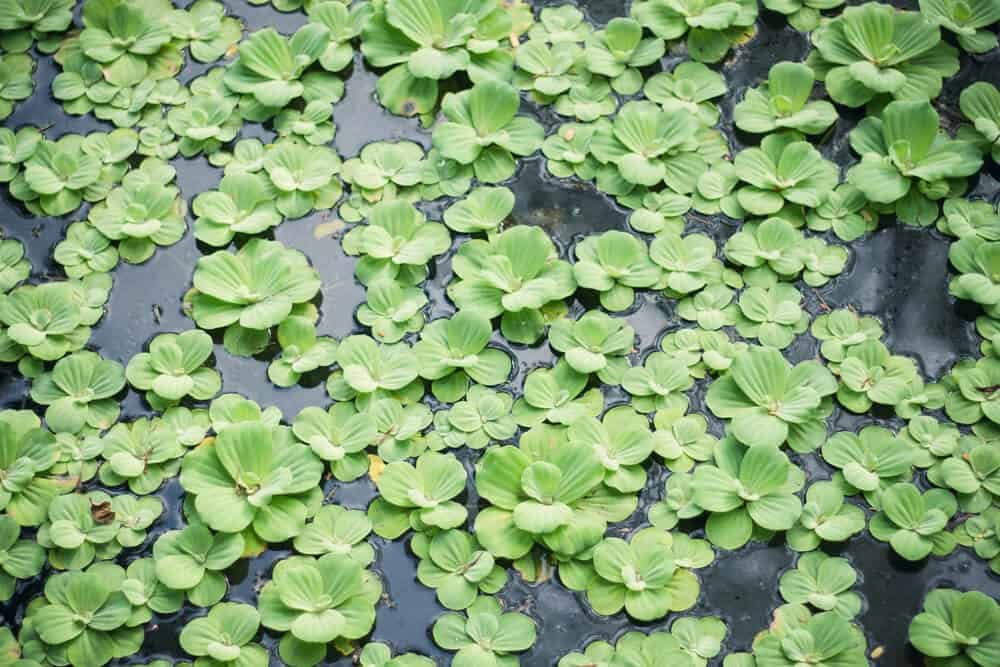
How To Deal With An Infestation Of Water Lettuce?
When left to their own devices, water lettuces may be quite a hassle. There are usually a few options for dealing with them, the first of which is to let things happen naturally. This is troublesome, though, but it is not a possibility in more temperate climates.
During the wintertime, they are just not chilly enough to destroy them. People have come up with more realistic and successful strategies to deal with the plant throughout time, rather than relying on the ever-changing seasons.
In cases of widespread infestation, the use of many well-known pests in their total extermination has become widespread. The Neodydronomous pulchellus weevil has been utilized to control the spreading of the plant using a biological agent.
Spodoptera pectinicornis is another bug that is well-known for its taste for usually inedible plants. It’s a Thai caterpillar that has been utilized to control the expansion of the plant by numerous government authorities and other worried third parties.
Alternatives to the weevil treatment include the application of well-known herbicides such as Shoreline defense. They are more efficient, but they are eventually harmful to the aquarium’s inhabitants.
They are more efficient against diseases in large bodies of water such as ponds. But using them in a smaller body of water will undoubtedly endanger both the plants and the fish.
There’s also the traditional, all-natural eradication method. It has proven to be the most successful strategy when attempting to control them in an aquarium arrangement, and they do not fully remove the plants from the aquarium.
In this manner, you can keep the number of lettuces you want while without endangering your fish.
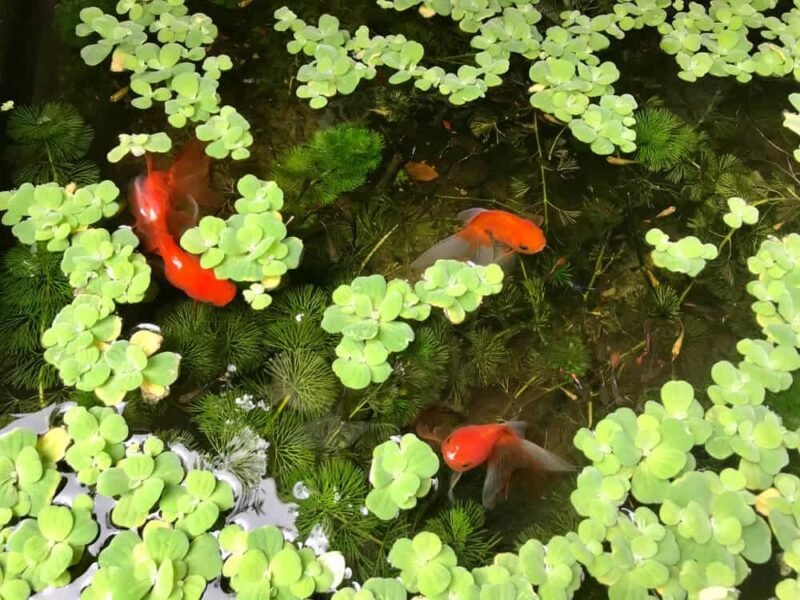
What Does Water Lettuce Need?
When you first put the water lettuce in an aquarium, it will appear to be struggling to adjust to its new surroundings. The water lettuce will become uncontrollable once it has become accustomed to the tank environment. To prepare the plant for speedy development, cut these leaves.
Because the plant can carry parasites and unwanted organisms, it’s best to get it from a reliable source. Since water lettuce is a tropical plant, it needs to be kept at 70 to 80 degrees Fahrenheit. However, it can thrive in colder regions.
You can close the tank all the time. Make sure that the area doesn’t have a lot of moisture. PH levels should be between 6.0 and 7.5. Direct sunlight can scorch the leaves. It prefers to be in the shade.
For the plant, a conventional set of full-spectrum T8 or T5 lights should suffice. When the leaves start to turn yellow or brown, you know the lighting is too intense. The leaves will become stunted and shorter if the plant does not receive sufficient light.
Check to see if the aquarium water has enough nourishment if you detect a slow growth rate. To allow its development, you’ll need at least 10 gallons.

How Do Water Lettuce Reproduce?
One of the most amusing aspects of this water plant is that it has nothing to do with lettuce. Water lettuces get their name from the fact that they resemble lettuce. When introducing these creatures to a tropical tank environment, the first few days are often a battle.
They normally struggle for a while as they try to adjust to the tank water, and once they do, it just takes a couple of minutes for them to start growing. It can be a bit of a hassle at first, but there’s no restraining them once they get going.
Asexual and sexual reproduction are both possible for water lettuces. It reproduces in a mother-daughter way when it reproduces asexually. A new plant emerges, yet a stolen remains linked to the previous one.
When the reproduction phase has been performed an incredible amount of times, the plants gradually form a large mat that is fast and powerful enough to fill the whole area of even large bodies of water in a short amount of time.
The plant reproduces mostly by asexual reproduction. An asexual route is also an option, but it is extremely improbable. It only occurs under exceptional circumstances.
Cross-pollination is a big part of how it pollinates. Whenever the seeds of the water lettuce mature, they normally turn from green to brown. In thick mats, sexual pollination is more probable, and the wind is frequently the pollinator in these situations.
The seeds of the plants normally hover on the water’s surface for a brief period before sinking and resurfacing after several days. They would then reemerge as long as the water is not too chilly. They are remarkably strong once dug in.
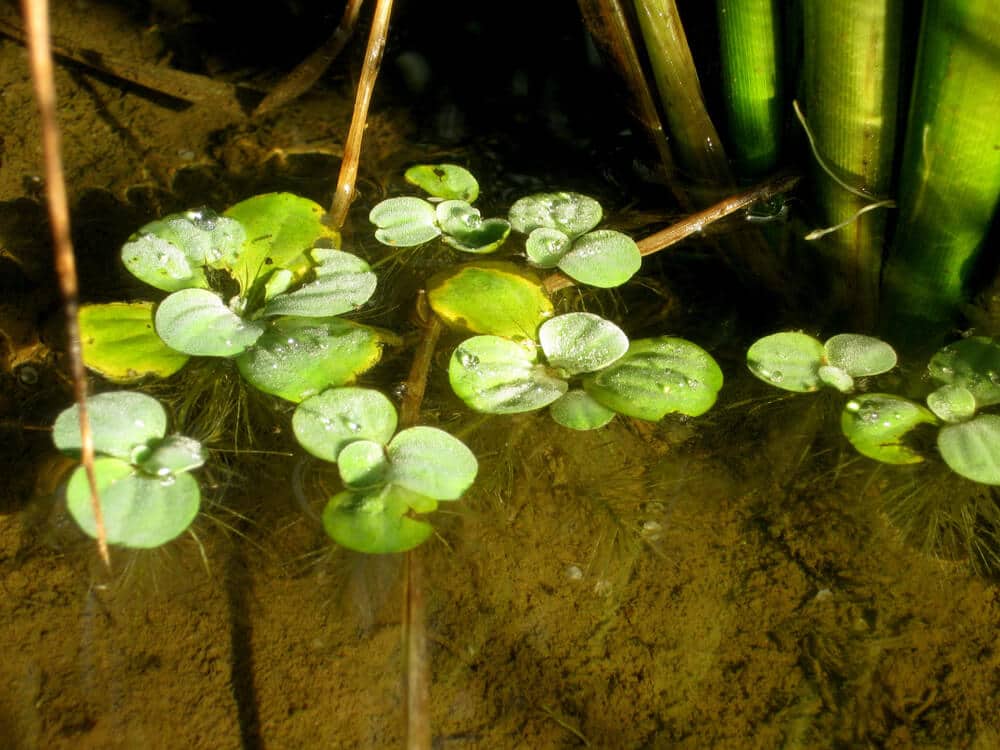
How Do Water Lettuce Propagate?
Water lettuce may reproduce both sexually and asexually, with the latter being more practical in household tanks. The plant reproduces asexually using daughter plants connected to the parent plant by small stolons.
This type of propagation frequently produces dense mats that blanket the aquarium’s surface. Regularly weed the plant to keep it from suffocating your fish or other plants.
How To Plant Water Lettuce?
Although water lettuce tends to hoard all of the nutrients for itself, it can coexist with other aquatic plants. They have the potential to improve the tank’s overall look significantly.
There are few rules to follow when adding water lettuce to your aquarium to ensure they survive the initial introduction to the new aquarium. They rarely live without assistance from others in most circumstances. They’re tough plants, but they still need care.
Water Lettuce Needs A Little Sunlight
For photosynthesis, they, like all plants, require sunlight. Nurtured water lettuces, on the other hand, require varying amounts of sunlight.
The heat can scorch them. Use an artificial light source. You can put them where direct sunlight won’t hit. In the first several weeks, a few T5 or T8 bulbs should suffice.
You Must Keep An Eye On The Humidity
Water lettuces are finicky about humidity, and they require a lot of it to thrive organically. If the environment is especially dry, you might want to try enclosing the aquarium.
This will offer sufficient humidity for the plants to thrive. I realize this isn’t ideal for a planted tank. However, the cover-up would only be in place for a few weeks.
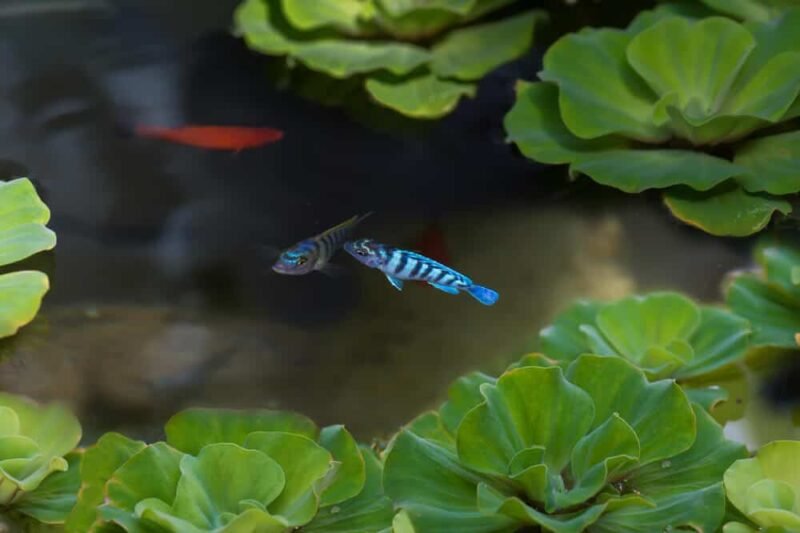
How to Keep Water Lettuce from Spreading Over the Aquarium?
They can provide some shelter for the smaller fish, but they can rapidly become a problem because of their rapid breeding. The only way to avoid this is to undertake some light trimming each week or so. They may not appear to require it, but it will only take a few days for them to overflow the aquarium totally.
For the time being, removing a few stolons each week is enough to keep them in control. If you want to get clear of them entirely, you’ll have to wait until the winter. They will die off in the first month or two because the temperature is much colder.
Is Water Lettuce Toxic To Fish?
It depends. For example, water lettuce in ponds and aquariums has huge benefits for aquatic life. Apart from serving as their shade, water lettuce provides them with the nutrients they need. Some fish even nibble on its leaves. However, it can be harmful to fish if they are not maintained properly.
They might eat water lettuce in large amounts. Although they aren’t poisonous, consuming too much can be toxic. Moreover, when water lettuces begin to thrive in a given site, they tend to suffocate all other plants. They will compete for resources and likely destroy other plants.
Water lettuce significantly reduce photosynthetic activity, oxygen content, and pH in big water bodies such as community ponds. They are disease’s forerunners and can be a breeding ground for Malaria-carrying mosquitos.
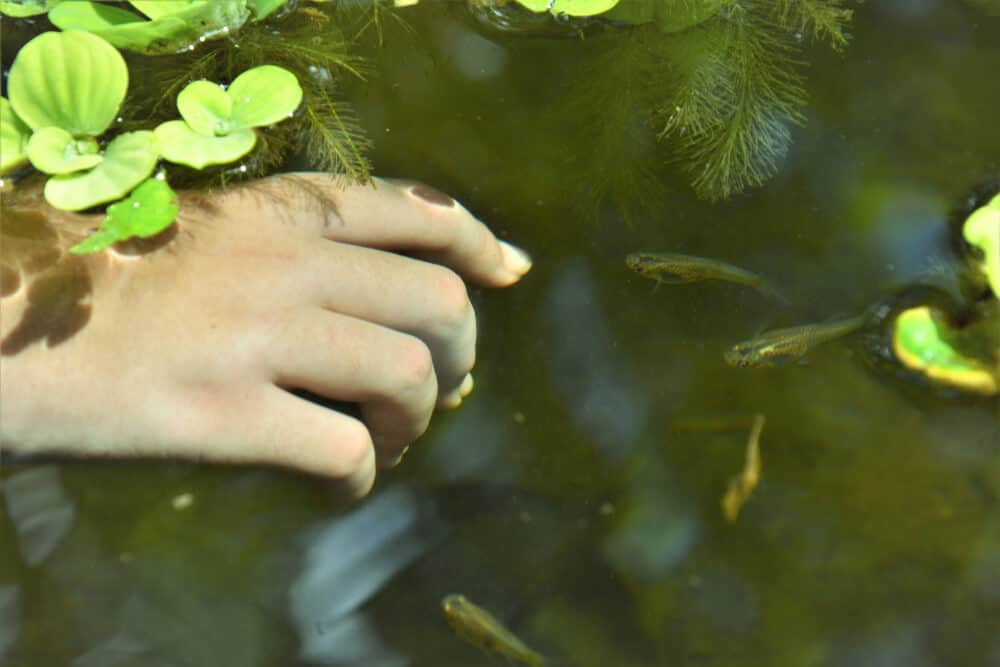
How Do You Take Care Of Water Lettuce In An Aquarium?
Water currents in a tank will move them around. If your tank has strong filtration, you can use a hula-hoop or a fishing line to confine the plant and keep it in place.
Growing water lettuce is difficult since it can easily overtake a tank. To keep it under control, you must cut off many stolons or individual plants each week. Trim the roots as well, leaving only 4 inches of plant roots behind.
If you’d like to cultivate the plant in an outside pond, bear in mind that this will die if it gets too cold during wintertime. You could put them in containers filled to the brim with water or put them in a warm area to overwinter.
For best growth, the plant needs nitrates, but it will also take ammonia and organic waste from the water. Fish that like to nibble on plant roots should not be kept with the plant. The fish may inflict irreversible damage to the water lettuce and harm it.
Does Water Lettuce Produce Oxygen?
They’re known to be the best types of oxygenators. They can release oxygen directly into the water. It even can absorb mercury from water. However, this doesn’t mean that you can forego your water filter and oxygenator.
Using water lettuce in your aquarium as a filter may not be enough. Some fishes may not survive. Adding a water filter and oxygen should keep your fish safe.
Is Water Lettuce Good For Guppies?
As mentioned before, water lettuce isn’t just a source of food; it can also be sheltered. Smaller fishes and guppies often find comfort with water lettuces. It can shield them from predators and the heat. It can even provide them with food.
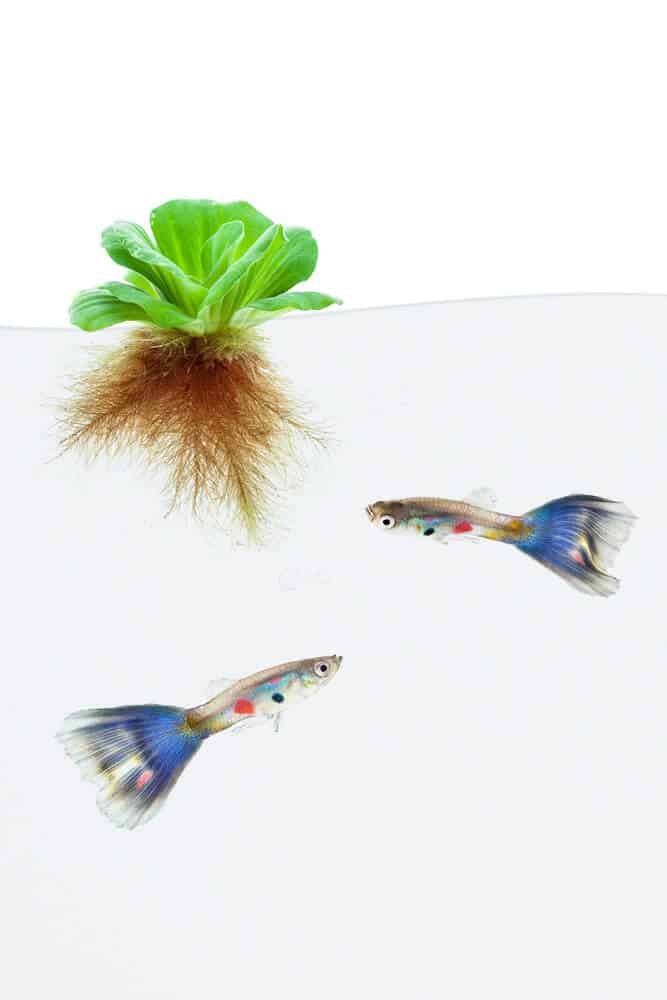
What Eats Water Lettuce?
Most fishes eat water lettuce. Turtles and snails can munch on them, too, from time to time. However, the most harmful ones are larger fishes like cichlids.
Goldfishes and other herbivorous fishes will also feast on water lettuces. Make sure to avoid adding water lettuce if you have these types of fish in your aquarium.
Can Water Lettuce Be Submerged?
Yes, they can but only for some time. The sand should cover the water lettuce seeds.
Once it begins to grow, it will gradually find its way up. The only parts that are completely underwater are their roots.
Do Koi Eat Water Lettuce?
Koi fishes eat almost anything in their path. They can nibble on your water lettuce if they’re hungry. However, they won’t be too interested in it if they are fed properly. Make sure you prevent them from nibbling on your plant by feeding them at the right time.
You can also protect your water lettuce by adding nets and rings.
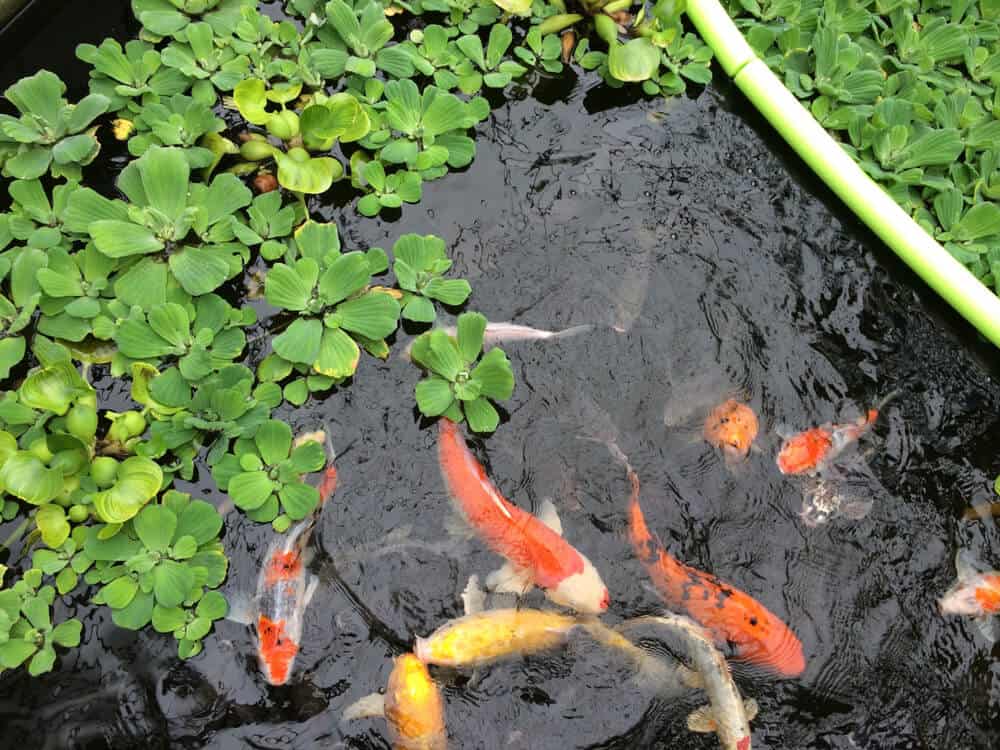
Final Thoughts
Water lettuce has several advantages in an aquarium. Its roots provide a haven for shy fish, crustaceans, and fry, in addition to suppressing algae. Because the plant is free-floating, it does not require a foundation.
Hopefully, we’ve covered everything you needed to know about water lettuces. Always remember that you need to properly maintain them to reap all their benefits.
